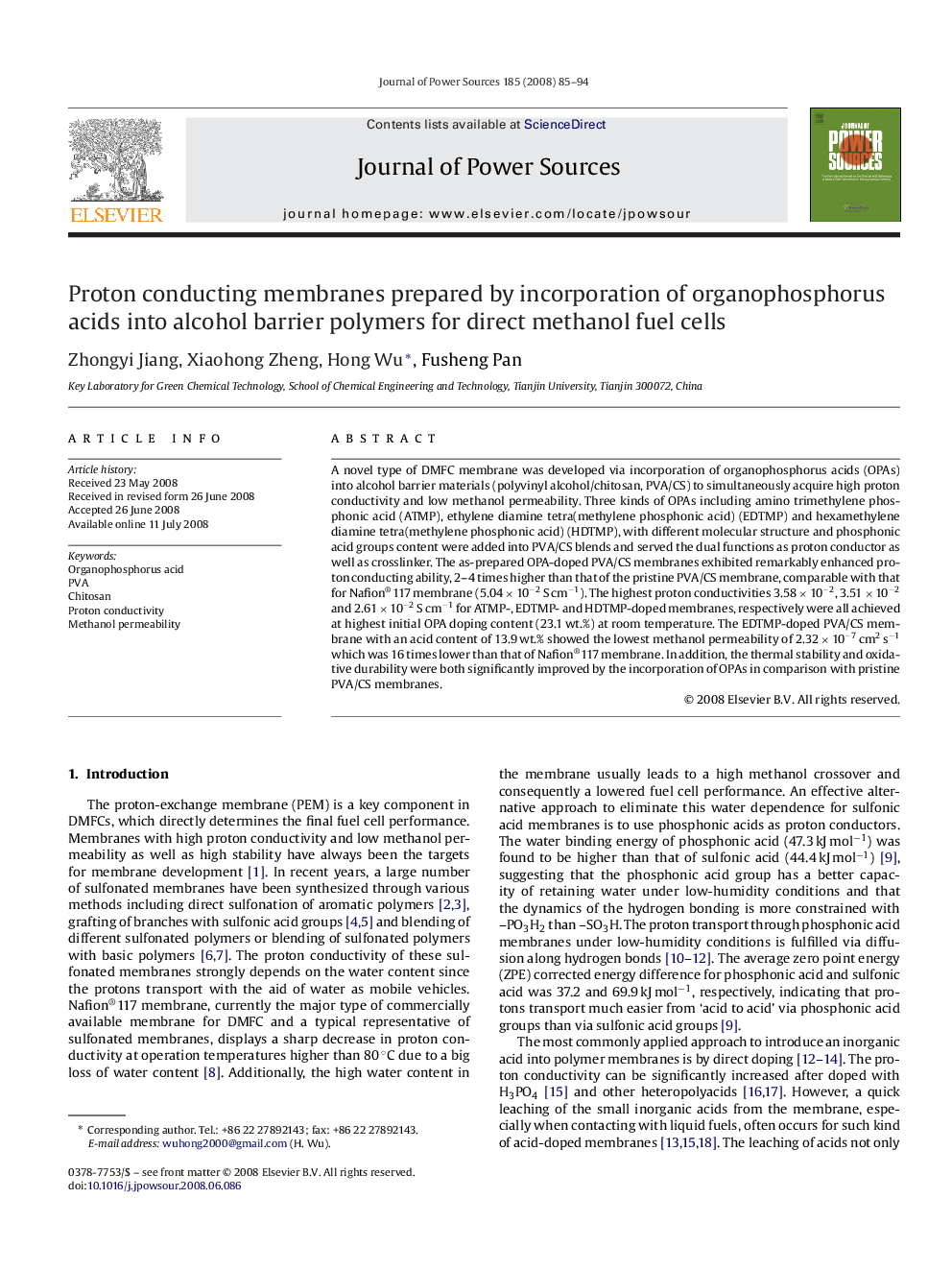| Article ID | Journal | Published Year | Pages | File Type |
|---|---|---|---|---|
| 1294385 | Journal of Power Sources | 2008 | 10 Pages |
A novel type of DMFC membrane was developed via incorporation of organophosphorus acids (OPAs) into alcohol barrier materials (polyvinyl alcohol/chitosan, PVA/CS) to simultaneously acquire high proton conductivity and low methanol permeability. Three kinds of OPAs including amino trimethylene phosphonic acid (ATMP), ethylene diamine tetra(methylene phosphonic acid) (EDTMP) and hexamethylene diamine tetra(methylene phosphonic acid) (HDTMP), with different molecular structure and phosphonic acid groups content were added into PVA/CS blends and served the dual functions as proton conductor as well as crosslinker. The as-prepared OPA-doped PVA/CS membranes exhibited remarkably enhanced proton conducting ability, 2–4 times higher than that of the pristine PVA/CS membrane, comparable with that for Nafion®117 membrane (5.04 × 10−2 S cm−1). The highest proton conductivities 3.58 × 10−2, 3.51 × 10−2 and 2.61 × 10−2 S cm−1 for ATMP-, EDTMP- and HDTMP-doped membranes, respectively were all achieved at highest initial OPA doping content (23.1 wt.%) at room temperature. The EDTMP-doped PVA/CS membrane with an acid content of 13.9 wt.% showed the lowest methanol permeability of 2.32 × 10−7 cm2 s−1 which was 16 times lower than that of Nafion®117 membrane. In addition, the thermal stability and oxidative durability were both significantly improved by the incorporation of OPAs in comparison with pristine PVA/CS membranes.
